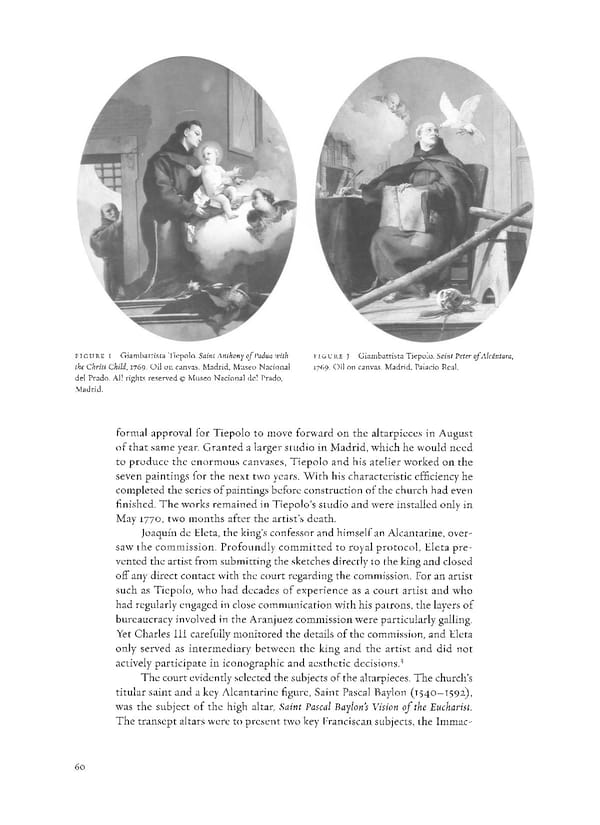FIGURE I Giambattista Tiepolo. Saint Anthony of Padua with F i CURE j Giambattista Tiepolo. Saint Peter of Alcantara, the Christ Child, 1769. Oil on canvas. Madrid, Museo Nacional 1769. Oil on canvas. Madrid, Palacio Real. del Prado. All rights reserved © Museo Nacional del Prado, Madrid. formal approval for Tiepolo to move forward on the altarpieces in August of that same year. Granted a larger studio in Madrid, which he would need to produce the enormous canvases, Tiepolo and his atelier worked on the seven paintings for the next two years. With his characteristic efficiency he completed the series of paintings before construction of the church had even finished. The works remained in Tiepolo's studio and were installed only in May 1770, two months after the artist's death. Joaqufn de Eleta, the king's confessor and himself an Alcantarine, over- saw the commission. Profoundly committed to royal protocol, Eleta pre- vented the artist from submitting the sketches directly to the king and closed off any direct contact with the court regarding the commission. For an artist such as Tiepolo, who had decades of experience as a court artist and who had regularly engaged in close communication with his patrons, the layers of bureaucracy involved in the Aranjuez commission were particularly galling. Yet Charles III carefully monitored the details of the commission, and Eleta only served as intermediary between the king and the artist and did not actively participate in iconographic and aesthetic decisions.3 The court evidently selected the subjects of the altarpieces. The church's titular saint and a key Alcantarine figure, Saint Pascal Baylon (1540-1592), was the subject of the high altar, Saint Pascal Baylon's Vision of the Eucharist. The transept altars were to present two key Franciscan subjects, the Immac- 6o
 Giambattista Tiepolo: Fifteen Oil Sketches Page 60 Page 62
Giambattista Tiepolo: Fifteen Oil Sketches Page 60 Page 62